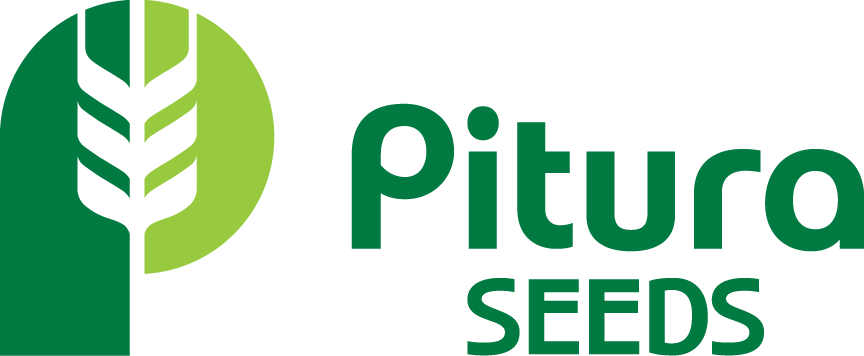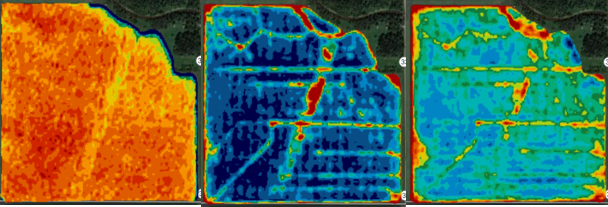Subsoiling Trial Results of 2022
2022 marks the third year of subsoiling trials on Pitura Seeds Farm. After seeing the results in fields 13/14 and 25/26, we subsoiled Field 19 this past fall. Over the course of the growing season, we were able to make notes on crop growth, water infiltration and yield. This is what we saw:
Using NDVI imagery we were able to visually capture growth between the subsoiled and un-subsoiled areas of Field 19. By June we were already able to see a clear difference between the two. Below are images from June, August and September. There was less biomass in the area not subsoiled, and plants were later to mature.
This showed in the yield, as all three fields had a bushel increase in the subsoiled areas when compared to the untreated checks. Working with Enns Brothers, we were able to scientifically pull data from our harvest maps to calculate yield gains or losses. Field 19 showed an increase of 7.2 bu/ac, field 25/16 an increase of 7.3 bu/ac and field 13/14 an increase of 0.3 bu/ac. Obviously this isn’t always the case. Last year field 25/26 had a decrease in yield of -0.5 bu/ac in the subsoiled area. Because of the drought last year, subsoiling was a detriment. However, with all of our excess moisture this year, subsoiling allowed the water to move through the soil profile faster than areas that hadn’t been subsoiled. Based on the soil probes in each of the fields, the untreated soil held on to 2 more inches of water than the subsoiled areas. This could prove to be beneficial in the 2023 growing season, depending on whether we enter into a drought again or not. For this season, we had enough moisture that being water limited was not a concern in the subsoiled areas.
So we’ve seen an increase in yield across all three fields, but does this make it an economical decision? This fall we sat down and applied market values to the increases in yield. While we did see a decease in yield for the first year in Field 25/26, all three fields resulted in a net gain for the farm. That yield increase ended with an additional $5/ac in Field 13/14, $50 in Field 25/26, and an additional $120 in Field 19. Over the past few years Field 13/14 subsoiling has produced $120 more per acre, and Field 25/26 produced $15/ac more.
While subsoiling may not be a fit for every farm, it has certainly shown it’s value in our heavy clay soils.
-Beth Ens


